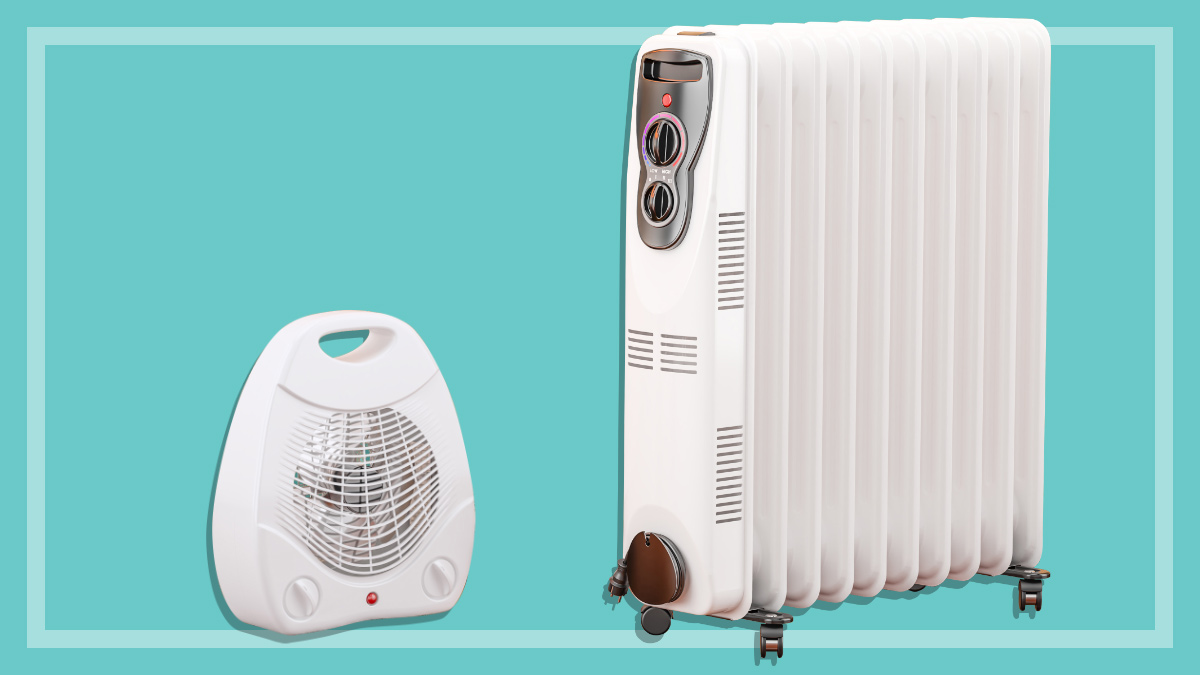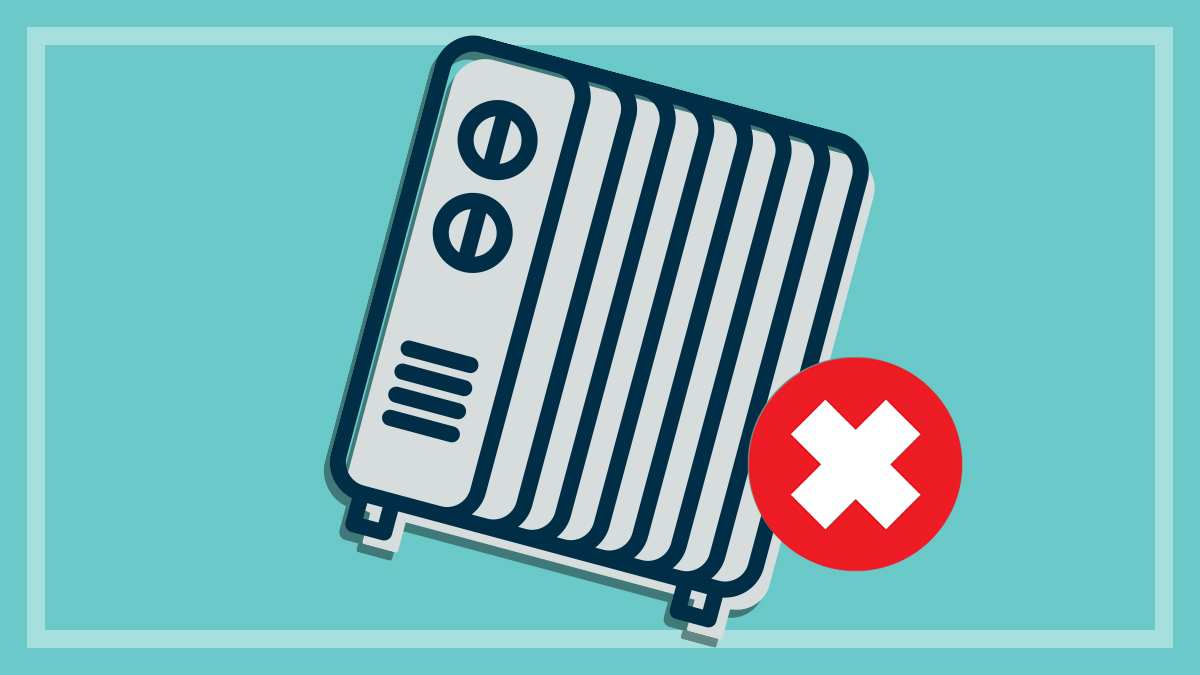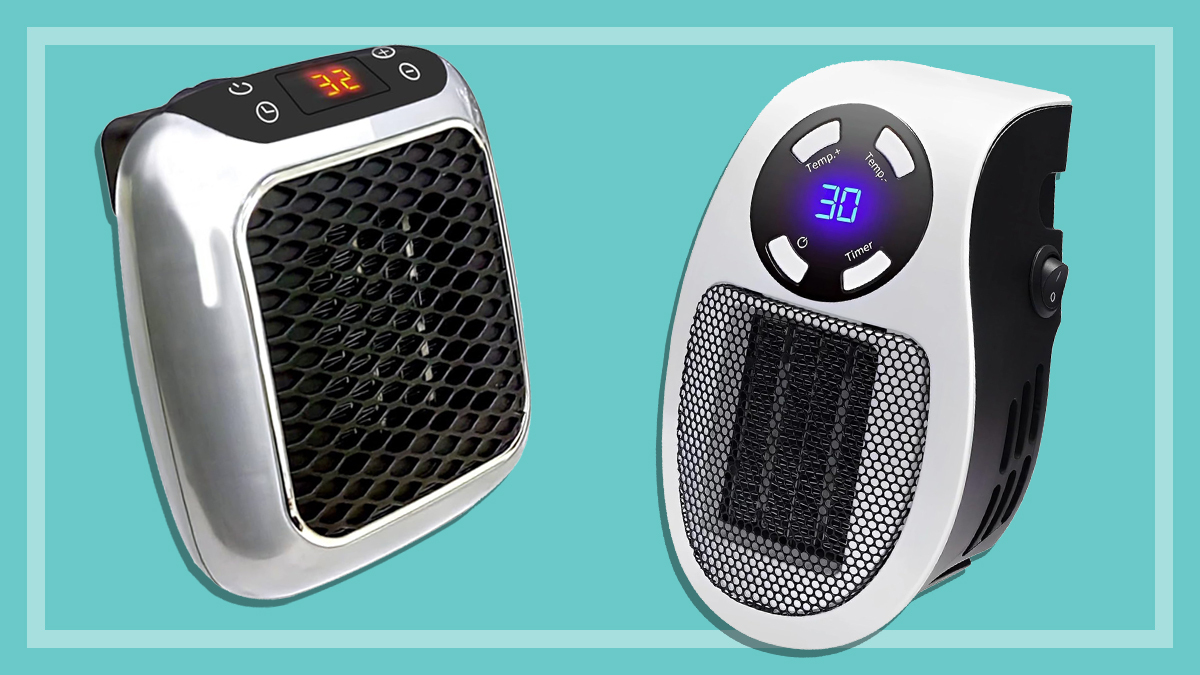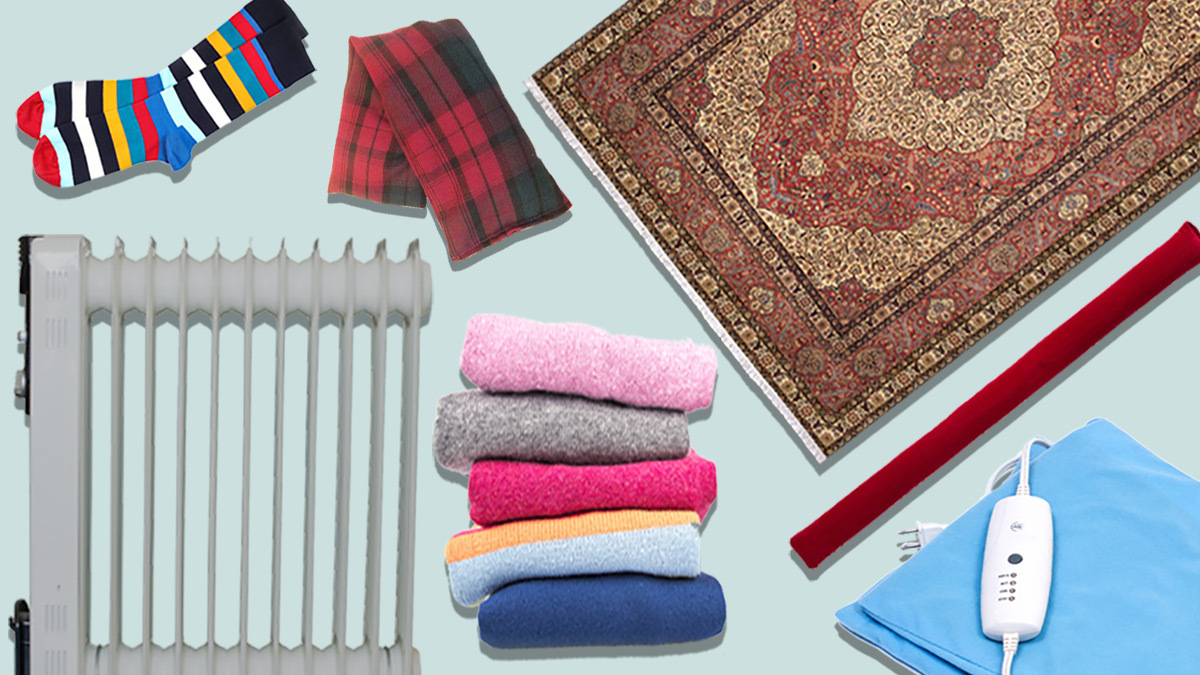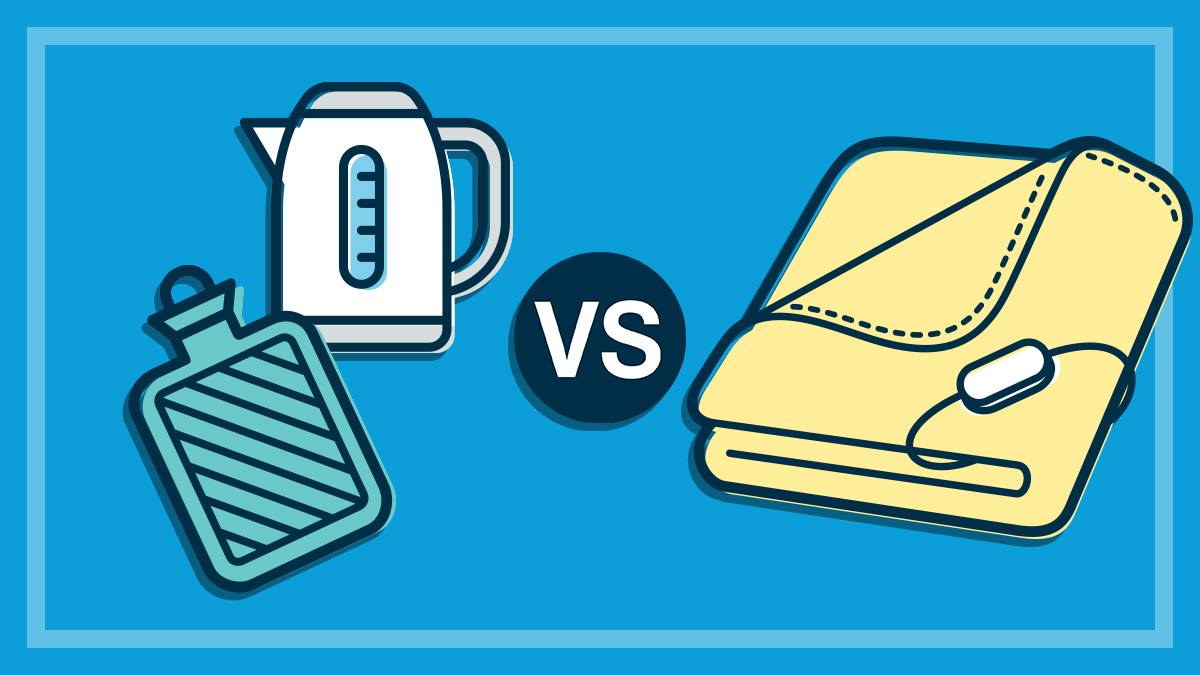Get our independent lab tests, expert reviews and honest advice.
The most eco-friendly heating options
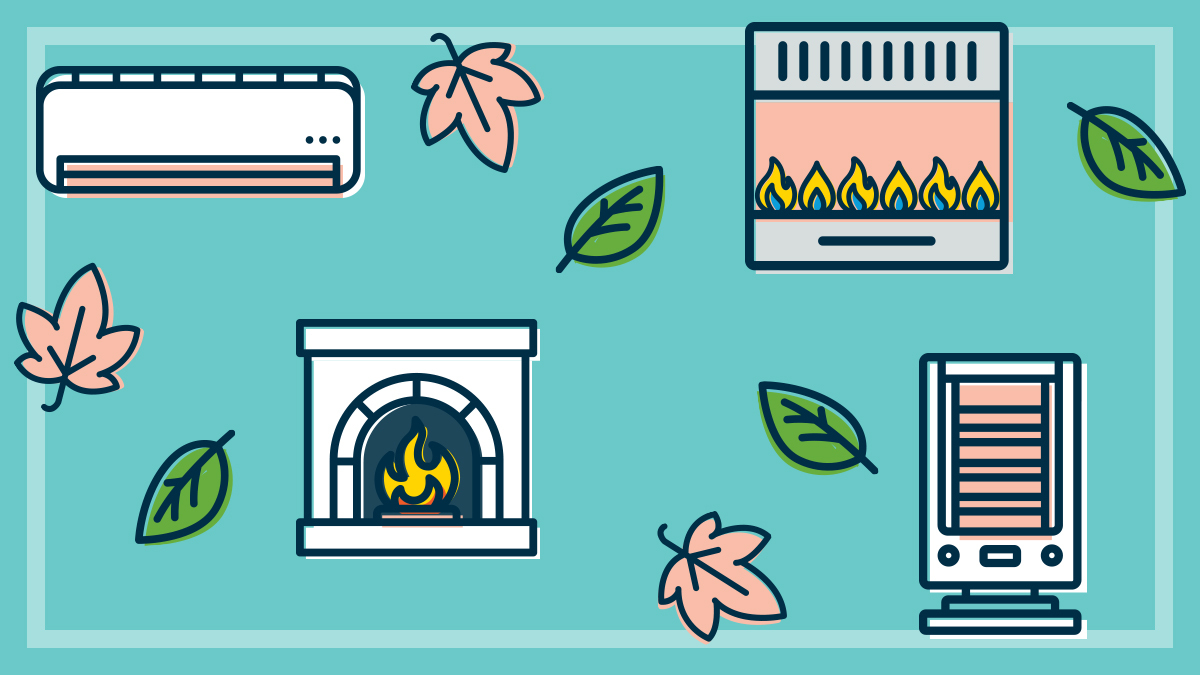
Accounting for about 40% of household energy use, heating is a significant contributor to our environmental footprint. So if you’re trying to reduce your impact on the planet, it makes sense to take a good look at how you heat your home.
On this page:
- Air conditioning
- Electric heating
- Wood fire heating
- Gas heating
- Heating hacks to reduce your carbon footprint
Choosing an energy-efficient heating system and renewable energy sources is the best way to reduce your carbon footprint – and the good news is that it can reduce your bills too.
Here’s how different heating options stack up, and how to tweak your heating to make it as efficient as possible.
Most to least eco-friendly heating systems
Short of moving to a tropical island so you need never use a heater again, these are the most energy-efficient and environmentally friendly options for heating your home:
- Reverse-cycle air conditioner
- Electric heater
- Wood fire
- Gas heater.
There are some caveats around this, of course. For instance, powering an electric heater with the solar panels on your roof will be more eco-friendly than running an air conditioner using coal-fired electricity. And chopping down trees (especially from old-growth or native forests) specifically to fuel a wood fire isn’t doing the planet any favours, either.
And what you do with your home will have a big impact on how energy-efficient (and therefore eco-friendly) your home heating is: a well-insulated home, with electric heating used in combination with ceiling fans to distribute the warm air, will use less energy than an energy-hungry older air conditioner in an uninsulated, draughty house.
Air conditioning
Air conditioning is by far the most energy-efficient way to heat your home – for the amount of heat they deliver, they use far less energy than portable electric heaters but can heat larger areas more effectively. And they often have more sophisticated timers and thermostats that can reduce the amount of energy they draw.
For every unit of electricity that an air conditioner consumes, it can put out three or more units of heat due to the heat pump technology that they use – making them more energy-efficient than portable electric heaters.
How to make your air conditioning more environmentally friendly
If you want to take your eco-friendly heating to the next level, you could switch energy providers to one that uses 100% renewable energy – or, better yet, make your own energy with solar panels and use a green energy provider to top up what your solar produces.
Make sure your air conditioner is running as efficiently as possible by cleaning the filters regularly
Make sure your air conditioner is running as efficiently as possible by cleaning the filters regularly, and don’t crank the air con up to tropical temperatures – don’t set it to 23°C when 20°C is still very comfortable. Each degree less will reduce your energy use by about 10%.
And try to stick to a difference of about 8°C between the outside temperature and your reverse-cycle air conditioner where possible – that way you can stay comfortable without chewing through the electricity.
Electric heating
An electric heater is basically 100% efficient, as almost all of the electricity it draws is converted to heat. Some of it does go towards powering built-in fans and electronic controls, but that means that even the energy that goes into running it isn’t wasted (unless you’re running it in an inefficient way – more on that later).
But while electric heaters efficiently convert electricity to heat, they do use a lot of power – not great for the environment. They’re actually the highest producers of greenhouse gas emissions of all types of heating, due to the fossil fuels used to produce electricity.
Oil column heaters use the least amount of electricity, but only by a narrow margin. Convection heaters such as panel and micathermic panel heaters are the least energy-hungry after oil column heaters.
How to make your electric heater more environmentally friendly
As with air conditioning, your best bet to reduce your environmental footprint is to use green energy to power your electric heater. And adding your own solar power into the mix will further reduce your footprint.
For a home with its own solar panel system, running an electric heater or air conditioner during the daytime can be virtually electricity-neutral
CHOICE expert Chris Barnes
“For a home with its own solar panel system, running an electric heater or air conditioner during the daytime can be virtually electricity-neutral,” says CHOICE heating expert Chris Barnes.
Using your ceiling fan on reverse can help make your electric heater more effective – it will distribute the warm air throughout the room, rather than having it rise up to the ceiling. This will heat your home more effectively and means your heater won’t have to work as hard.
Of course, a ceiling fan still needs power to run, but they’re very energy efficient. The extra electricity you use to run the fan will probably cancel out the extra energy your heater would need to run on a higher setting.
Wood fire heating
Wood heaters aren’t quite the ecological nightmare you might expect them to be, given that they require trees – literally the lungs of the earth – to work. But if you’re using sustainably produced firewood (by regrowing the amount that you burn), a wood heater can produce the least amount of CO2 of all other fuels, particularly since the trees contribute to reducing carbon dioxide while they are alive.
If you’re using sustainably produced firewood, a wood heater can produce the least amount of CO2 of all other fuels
Modern slow-combustion stoves can be quite energy-efficient, but generally wood heaters are less energy-efficient than electric and gas heating. And the smoke and other combustion products can get into the indoor air, causing problems for people with asthma and other respiratory conditions. They’re also a major contributor to outdoor air pollution, so ideally they shouldn’t be used in built-up areas due to their particulate emissions.
Just bear in mind that you’ll need to start the fire and get it burning well before it’ll start to heat the room. And you’ll need to go out into the cold to bring more firewood inside – an unpleasant prospect on a cold evening!
How to make your wood heater more environmentally friendly
If you plant a tree for every one you burn, you can run a wood heater quite sustainably. If you can collect your own firewood from sustainably grown and harvested timber near your home, so much the better – it’ll mean you won’t have to use as much energy to transport it.
Collecting firewood yourself isn’t a quick-fix option, though – you need to allow time for it to season (leave it to dry for two summers). Burning green wood wastes energy because the water in the timber evaporates. Opt for hardwood over softwood, as it contains more energy, so will burn longer and more steadily.
Gas heating
Gas heaters can be relatively cheap to run, but they’re far from being a green option. Gas is a non-renewable resource, and from a purely financial point of view, the price of gas is expected to keep rising.
If you’re using electricity-based heating like an air conditioner or electric heater, you can reduce the environmental impact by using solar or buying green energy. But the same can’t be said for gas.
However, they do provide instant heat, and lots of it. A single unflued gas heater can create up to 25 megajoules per hour of energy, which is equivalent to more than 6kW of electric heating– the same as you’d get from three 2kW electric heaters. So they’ll heat up a room faster than an electric heater, which means using less energy. But no matter how efficient they are, there’s no avoiding the fact that gas heaters run on fossil fuels.
Gas is a non-renewable resource, and from a purely financial point of view, the price of gas is expected to keep rising
Gas heating is also associated with potential health effects, too. Burning gas results in byproducts such as nitrous dioxides, carbon monoxide and fine particulate matter, which can contribute to childhood asthma and other respiratory health problems. And while you obviously don’t want these in your home, they’re also not great for the environment in general, contributing to greenhouse gas emissions.
How to make your gas heater more environmentally friendly
There isn’t a great deal you can do to reduce the impact of your gas heater – by its very design, it uses fossil fuels. One thing you can do to reduce the amount of byproducts created by burning gas is to have your gas heater serviced regularly.
And if you keep your home well-insulated and don’t block the flow of heat from your gas heater, it’ll need less gas energy to run, reducing your footprint slightly.
Heating hacks to reduce your carbon footprint
No matter what type of heating you use, if your home isn’t set up in the most thermally efficient way, then you’re going to burn through more resources, which means a bigger impact on the environment.
Regardless of your heat source, there are a few things you should do to make your heating system as effective as possible:
- Insulate your home
- Seal up any draughts or cracks
- Use curtains and blinds to keep the warmth in
- Don’t block the flow of air from your heat source
- Cover hard floors with rugs
- Use ceiling fans on reverse to circulate the warm air
- Pop on another jumper or a beanie rather than cranking up the heating
- Buy the most energy-efficient system you can afford, regardless of whether you’re using electricity, gas or timber to heat your home
- Position your heater in the best possible position to most warm your home.

